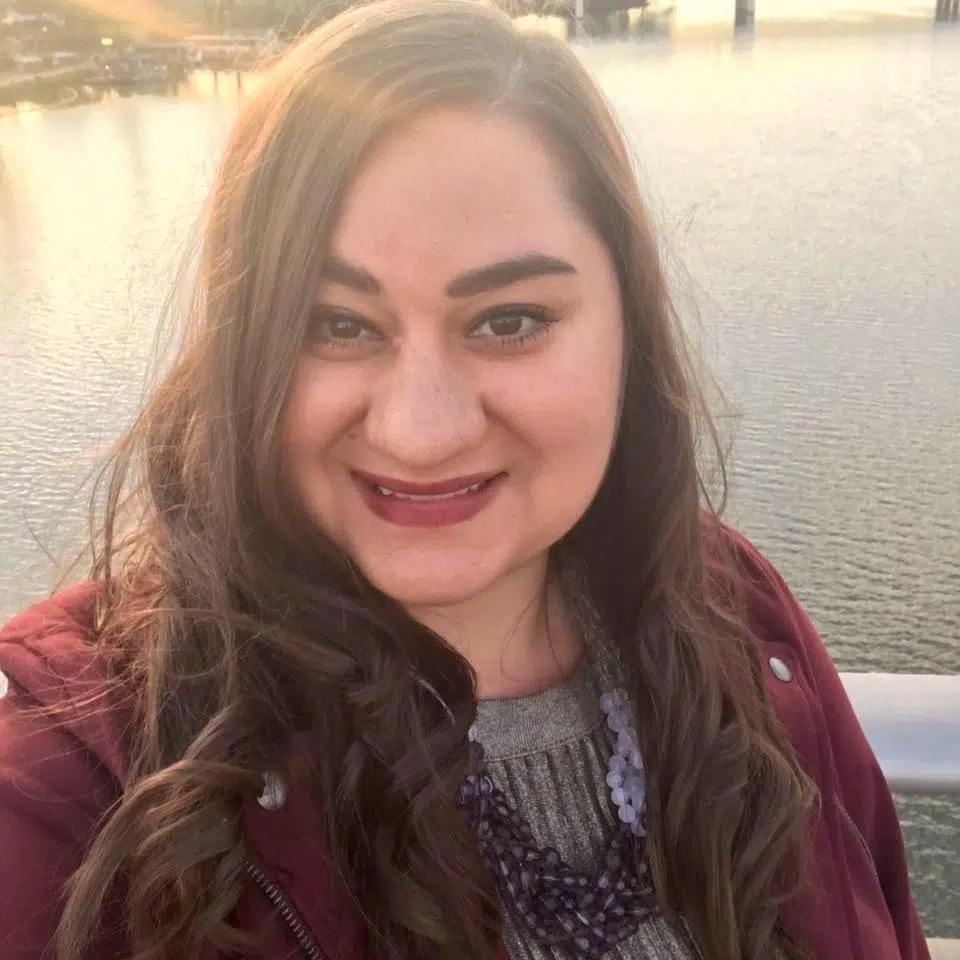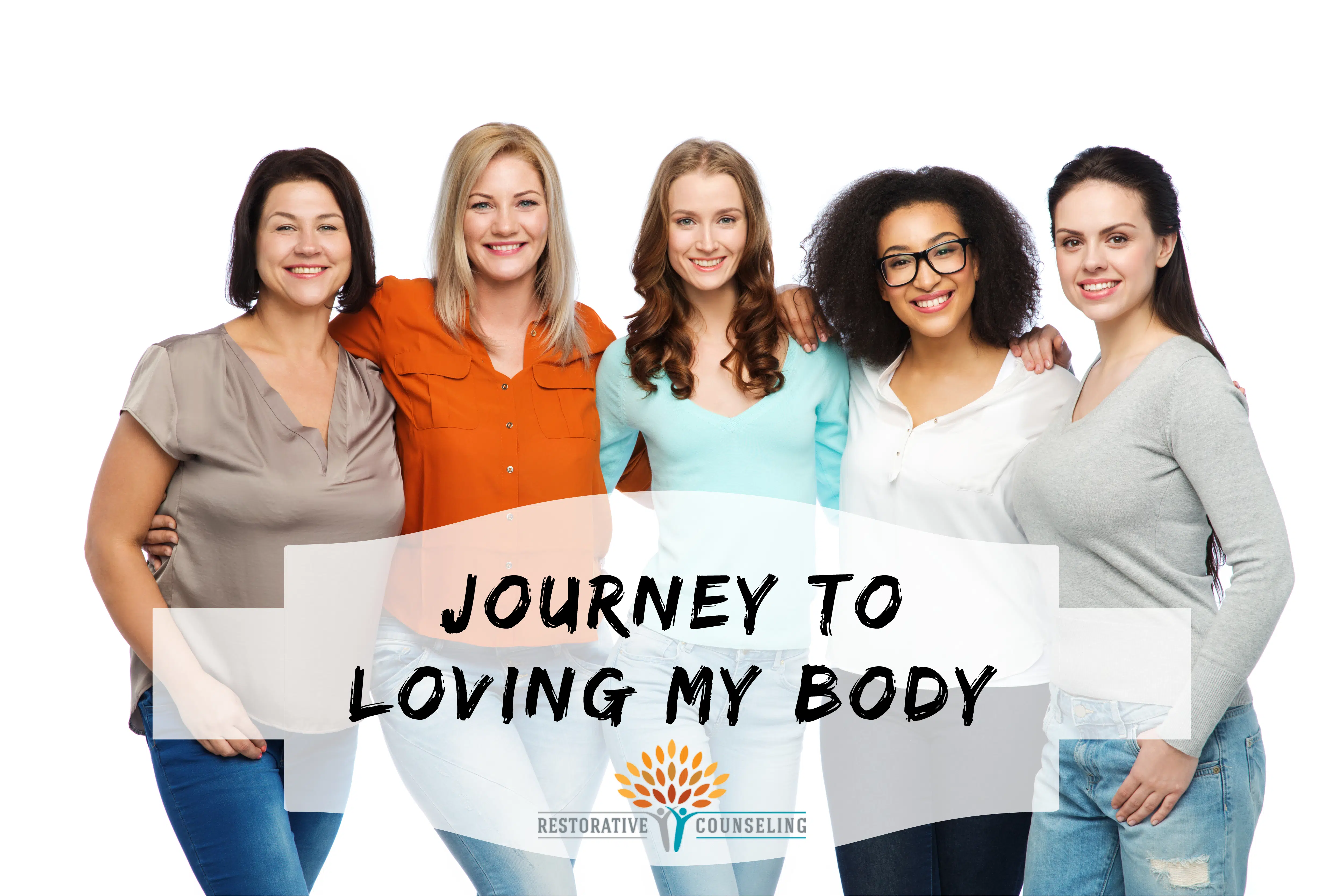Written by Katie Jackson-Griffin, LCPC
The first time I remember my body being a problem, I was six years old. I was very excited about my upcoming dance recital because we were going to wear fuzzy outfits and dance along to Sleigh Ride. I was desperately hoping that my outfit would be pink. The conversation between my dance teacher and my mom is one I vividly remember; they were considering if they would be able to find a size big enough. The dance teacher commented that I might need to be put on a diet. I was so sad at the prospect of being left out of the recital. Luckily I did get my costume, but I was no longer as excited to wear it. I felt different — and like an outsider. These harmful comments and a series of diets continued into my adult life.
According to a recent study, by the time girls reach the age of 10, 80% of them have been on a diet*.
More than half of girls and a third of boys ages 6-8 want a thinner body. How are children so young already learning that their bodies are a problem? What damage does this do when young children are uncomfortable and ashamed of their bodies? This drive for a smaller body is influenced by our culture. Think about what type of bodies are represented in commercials, sports, movies, and magazines. Typically, the bodies you see are thin and white. The lack of representation of diverse bodies sends the message that there is only one type of body that is not only desirable but acceptable. If your body doesn’t look like that, you can feel that your body is wrong or bad. Additionally, consider how characters with larger bodies are portrayed. Movies and TV shows targeted to younger kids include these body size messages. Often, characters with large bodies are the villains, deemed dirty or lazy, or they star in storylines in which they become thinner and then happier.
This messaging doesn’t only come from outside sources, but from family and peers as well.
I vividly remember in middle school having several boys sing the Jenny Craig and Weight Watchers slogans at me. I wanted to fit in and wear the Abercrombie and Fitch and Limited Too outfits deemed cool at the time. However, it was difficult to find things that fit me at those stores. I sunk into a deeper sadness and anger toward my body. I ran through the list of what I could have been doing wrong and I couldn’t figure it out. My snacking was rarely “too much.” I wasn’t eating “bad foods.” I was playing soccer about 4 times a week. So why was my body bigger than the other girls?
At a young age, I was already thinking that I had done something wrong because I was supposed to be in control of how my body looked.
Often, my unhealthy body image was masked by the cries that my health was in jeopardy. There was no evidence to support that. The various diets I tried left me exhausted and weak. I was restricting my eating in a way that wasn’t sustainable. Was this supposed to be healthy?
The constant messaging that certain bodies are not good enough can take a serious toll.
Unfortunately, I know that my story is not unique, and I live in a relatively privileged body. My body is white and small enough that I am able to buy clothes from most mainstream stores and fit in airplane seats and waiting room chairs. This is not the case for those who live in larger bodies than me.
Here are some ways that body size discrimination is seen in society:
- Some people are unable to shop for clothing at the mall.
- Venue seats with restrictive armrests can leave bruises.
- People avoid sitting next to certain types of bodies on airplanes or they make loud complaints about someone taking up too much space.
- Facing repeated derogatory comments equating fat with being lazy or dirty.
- The insistent ads pushing for weight loss and reinforcing the fear of gaining weight or being in a larger body.
All of this adds up to the idea that large bodies are bad and wrong. Repeated discrimination makes those in large bodies more susceptible to disordered eating and to experiencing the lasting effects of this trauma.
I am now able to trust that my body knows what to do.
My personal journey led me to discover Health at Every Size (HAES) and intuitive eating. HAES seeks to promote body acceptance, intuitive eating, and movement that feels good to the individual. Using these concepts, I was able to stop punishing my body, and instead, use food and exercise to nourish my body. HAES helped me to accept that I was not in control of how my body looked. The concepts helped me get in touch with listening to my hunger cues, learning how my body responds to food and movement, and recognizing that my body is inherently a good body. For example, I don’t run because it doesn’t make me feel good and I dread it. Now, I enjoy dancing and yoga. Also, I eat when I feel hungry. If I want a brownie, then I eat a brownie. I don’t have to “make up for it” later. I trust that my body knows what to do.
This journey is not one that has been easy or is finished.
Sometimes, I still find myself having thoughts about needing to be on a diet when a certain size of pants isn’t fitting the way I want. I bristle when I hear others talk about how they need to exercise to “work off that donut” from this morning. These comments are ingrained in our culture and can seep back into my way of thinking, as well. So what helps when this happens? I refer back to my favorite books, blogs, and podcasts that celebrate all bodies:
- She’s all Fat podcast
- Intuitive eating: A Revolutionary Program that Works
- Dieticians:
- Julie Duffy Dillon (@foodpeacedietitian)
- Wendy & Jess (foodheavenshow)
- Claudia Felty (@drclaudiatfelty)
I reach out for help when I need it from friends and from professionals. Fortunately, the Health at Every Size (HAES) and intuitive eating communities are continuing to grow with knowledgeable therapists and dietitians. This journey has helped me incorporate self-love and a non-diet approach to my work as a therapist. It has helped me recognize the impact of living in a marginalized body and how I can give this knowledge to my clients. Armed with this knowledge, I can guide my clients to re-frame their perception of their bodies and help build their confidence. Having this firsthand knowledge of coping with this issue has given me even more compassion and knowledge.
Hope exists.
There is help out there for everyone to start a journey toward self-love and acceptance. Just imagine the freedom of not being preoccupied with diet and exercise. It is possible to love yourself and your body for all it can do for you. I no longer see my body as a problem. My body is a gift that I am so grateful for.
The clinicians and I at Restorative Counseling are here to support you on your journey to self-love and acceptance. Contact Restorative Counseling to learn more about our services and to schedule an appointment.
Resources:

Hi, I’m Katie!
I use HAES and DBT approaches to help people overcome their challenges with low self-esteem, anxiety, and depression. Read more about me.
Follow Restorative Counseling
Sign up for our newsletter

